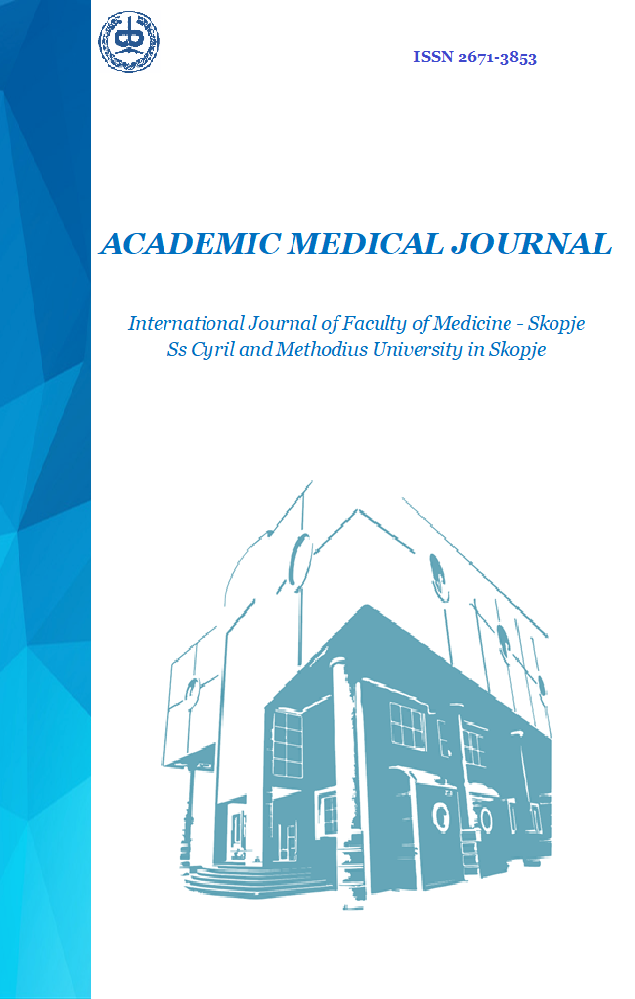GIANT CONDYLOMA ACUMINATUM OF BUSCHKE-LOWENSTEIN: A CASE REPORT
Keywords:
giant condyloma, low-risk Human papillomavirus, vulvaAbstract
Buschke-Löwenstein tumor is a rare, slow-growing tumor that may arise from a pre-existing condylomatous lesion and has exophytic, cauliflower-like, or papillomatous growth pattern.
These tumors are associated with low-risk human papillomavirus infection, most commonly types 6 or 11. They predominantly occur in men in the anogenital region, and are associated with immunodeficiency. The treatment is controversial, but the greatest success has been observed with “cold knife” surgical resection with clear margins.
We present the case of a 42-year-old woman with a tumor in the anogenital region that grew progressively over the course of 6 months. The giant condyloma acuminatum covered most of the labia majora of the vulva in a continuous pattern. Multifocal condylomas were observed both at the vaginal introitus and at the lateral aspect of the primary tumor.
The patient was tested and had no other sexually transmitted infections. After adequate preoperative preparation, a wide partial vulvectomy was performed. The postoperative course was uneventful.
Adequately planned surgery remains a treatment of choice for patients with giant condylomas.
References
Ben Kridis W, Werda I, Charfi S, Toumi N, Boudawara T, Mzali R, et al. Buschke - Lowenstein anal tumor: an ambiguous entity. Exp Oncol 2019; 41(2): 182-184. doi: 10.32471/exp-oncology.2312-8852.vol-41-no-2.13119.
Purzycka-Bohdan D, Nowicki RJ, Herms F, Casanova JL, Fouéré S, Béziat V. The Pathogenesis of Giant Condyloma Acuminatum (Buschke-Lowenstein Tumor): An Overview. Int J Mol Sci 2022; 23(9): 4547. doi: 10.3390/ijms23094547.
Shenoy S, Nittala M, Assaf Y. Anal carcinoma in giant anal condyloma, multidisciplinary approach necessary for optimal outcome: Two case reports and review of literature. World J Gastrointest Oncol 2019; 11(2): 172-180. doi: 10.4251/wjgo.v11.i2.172.
Correia E, Santos A. Buschke-Löwenstein Tumour: Successful Treatment with Minimally Invasive Techniques. Case Rep Dermatol Med 2015; 2015: 651703. doi: 10.1155/2015/651703. E
Atkinson AL, Pursell N, Sisay A. The giant condyloma (buschke-löwenstein tumor) in the immunocompromised patient. Case Rep Obstet Gynecol 2014; 2014:793534. doi: 10.1155/2014/793534.
Buschke A, Loewenstein L. Über Carcinomähnliche Condylomata Acuminata des Penis. Klin Wochenschr. 1925 Sep;4(36):1726–8.
Kowo M, Nzoume Nsope Mengang JM, Simeni Njonnou SR, Kouotou EA, Atangana PJA, Ankouane Andoulo F. Giant anogenital tumor of Buschke–Löwenstein in a patient living with human immunodeficiency virus/acquired immunodeficiency syndrome: a case report. J Med Case Reports 2022; 16(1): 116. doi: 10.1186/s13256-022-03339-1.
Balogh N, Kolozsi P, Tóth D. A rare malignancy: A case report of early progression of anal Buschke-Löwenstein tumor into squamous cell carcinoma in an immunocompetent patient. Int J Surg Case Rep 2024; 119: 109715. https://doi.org/10.1186/s13256-022-03339-1.
Danielewski JA, Garland SM, McCloskey J, Hillman RJ, Tabrizi SN. Human papillomavirus type 6 and 11 genetic variants found in 71 oral and anogenital epithelial samples from Australia. PLoS One 2013; 8(5): e63892. doi: 10.1371/journal. pone.0063892.
Barrow BE, Ansah KO, Naga HI, Sarantos N, Inman BA, Peterson AC, et al. Giant Condyloma Acuminatum: A Review of Reconstructive Options. Ann Plast Surg 2025; 94(6): 695-700. doi: 10.1097/SAP.0000000000004349.
Ajagbe OA, Ayandipo OO, Afuwape OO, Idowu OK, Adeleye AO, Ogundiran TO. Surgical treatment of perineal giant condylomata acuminata (Buschke Lowenstein tumor): Case series from a developing country. Int J Surg Case Rep 2024; 121: 109994. doi: 10.1016/j.ijscr.2024.109994.
Farach AM, Paradise E, Kieser RB. Treatment of a Buschke-Löwenstein Tumor With Radiotherapy and Cemiplimab. JAMA Dermatol 2025; 161(3): 336-338. doi: 10.1001/jamadermatol.2024.5826.
Zidar N, Langner C, Odar K, Hošnjak L, Kamarádová K, Daum O, et al. Anal verrucous carcinoma is not related to infection with human papillomaviruses and should be distinguished from giant condyloma (Buschke-Löwenstein tumour). Histopathology 2017; 70(6): 938-945. doi: 10.1111/his.13158.
Haycox CL, Kuypers J, Krieger JN. Role of human papillomavirus typing in diagnosis and clinical decision making for a giant verrucous genital lesion. Urology 1999; 53(3): 627-630. doi: 10.1016/s0090-4295(98)00351-3.
Baćo SJ, Mitric M, Mišić J, Stakic IA, Đukanović S. Buschke-Löwenstein Tumor (BLT): Successful Treatment of Human Papillomavirus (HPV)-Associated Squamous Cell Carcinoma With Radical Surgery and Chemotherapy. Cureus 2024; 16(11): e72828. doi: 10.7759/cureus.72828.
Chu QD, Vezeridis MP, Libbey NP, Wanebo HJ. Giant condyloma acuminatum (Buschke-Lowenstein tumor) of the anorectal and perianal regions. Analysis of 42 cases. Dis Colon Rectum 1994; 37(9): 950-957. doi: 10.1007/BF02052606.
Serpa-Irizarry M, Tiru-Vega M, Vazquez-Rivera C, Torres-Rivera B, Rivera-Roman K, Rodriguez-Quilichini S. A rare presentation of a rare entity: giant condyloma (Buschke-Löwenstein) tumor. J Surg Case Rep 2024; 2024(7): rjae459. doi: 10.1093/jscr/rjae459.
Sandhu R, Min Z, Bhanot N. A gigantic anogenital lesion: buschke-lowenstein tumor. Case Rep Dermatol Med 2014; 2014: 650714. doi: 10.1155/2014/650714.
Purzycka-Bohdan D, Szczerkowska-Dobosz A, Swiatecka-Czaj J, Peksa R, Urban M, Szczypior M, et al. Buschke-Löwenstein tumour associated with low-risk human papillomavirus genotypes successfully treated surgically. Postepy Dermatol Alergol 2019; 36(1): 112-114. doi: 10.5114/ada.2019.82831.
El Khoury A, Jensen JC, Pacioles T. Neoadjuvant chemotherapy and penile conservation in the management of Buschke - Lowenstein tumor, a case report. Urol Case Rep. 2019 Dec 23; 29:101111. doi: 10.1016/j.eucr.2019.101111.
Downloads
Published
Issue
Section
License
This work is licensed under CC BY 4.0 





